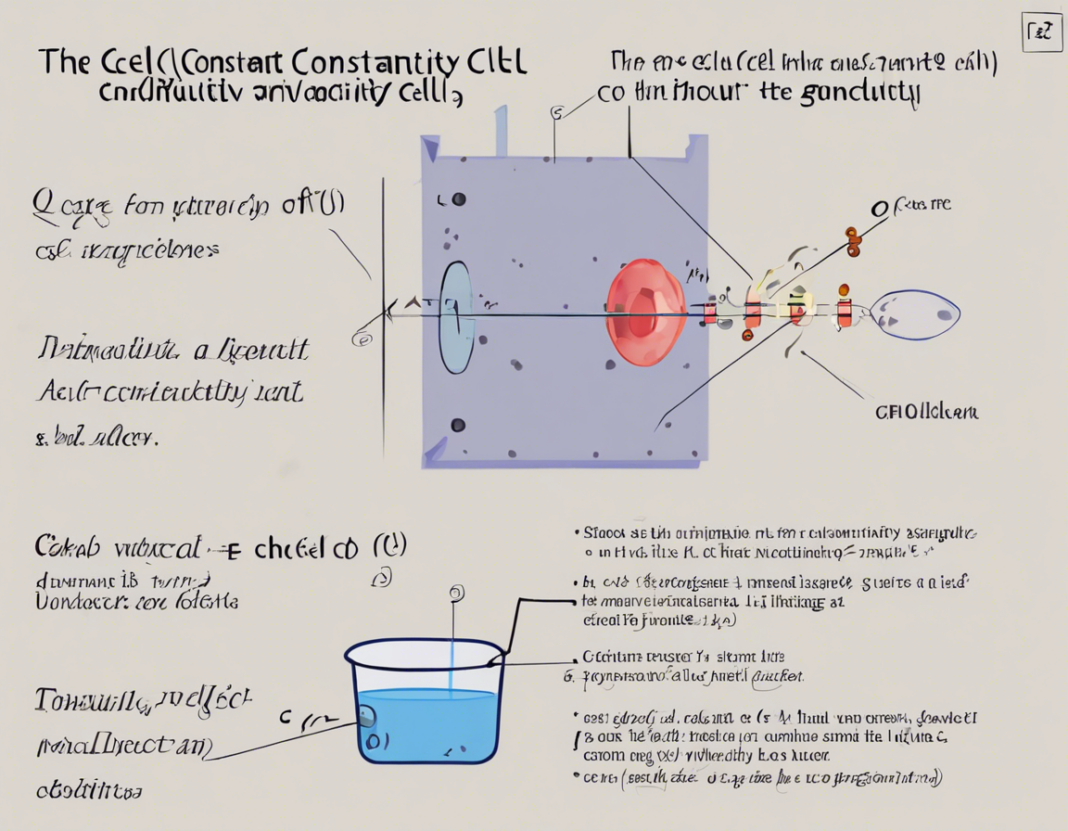Electric conductivity is a crucial property of solutions that is widely used in various industries and scientific research. Conductivity is a measurement of a solution’s ability to conduct an electric current, which depends on the presence of charged particles in the solution. The conductivity cell is an essential tool used to measure the conductivity of solutions accurately. In this article, we will delve into the concept of cell constant in conductivity cells, its significance, and how it influences conductivity measurements.
What is a Conductivity Cell?
A conductivity cell, also known as a conductance cell, is a device used to measure the conductivity of a solution. It typically consists of two electrodes that are placed in contact with the solution being tested. When an electric current is passed through the solution via the electrodes, the conductivity cell measures the ability of the solution to conduct electricity. The conductivity of the solution is directly related to the concentration of ions or charged particles present in the solution.
Understanding Cell Constant
The cell constant is a crucial parameter in conductivity measurements that determines the relationship between the physical dimensions of the conductivity cell and the actual conductivity of the solution being measured. The cell constant is defined as the ratio between the distance (d) between the two electrodes and the effective area (A) of the electrodes. It is denoted by the symbol (k) and is expressed as:
[ k = \frac {d} {A} ]
The cell constant is usually provided by the manufacturer or can be calculated using the physical dimensions of the conductivity cell. It is essential to know the cell constant when performing conductivity measurements to ensure accurate results.
Importance of Cell Constant
The cell constant is a critical factor that directly influences the accuracy of conductivity measurements. Here are some key reasons why the cell constant is essential in conductivity cells:
1. Calibration and Standardization
The cell constant is used in the calibration and standardization of conductivity cells. By knowing the cell constant, the conductivity of the solution can be accurately determined and compared with standard values. This ensures the reliability and consistency of conductivity measurements.
2. Correcting for Variations in Cell Geometry
Different conductivity cells may have varying geometries, electrode sizes, and distances between electrodes. The cell constant accounts for these variations and ensures that conductivity measurements are normalized, allowing for accurate comparisons between different cells and solutions.
3. Relationship between Cell Constant and Conductivity
The cell constant establishes the relationship between the physical dimensions of the conductivity cell and the conductivity of the solution. A larger cell constant indicates a higher sensitivity to changes in conductivity, while a smaller cell constant provides a broader measurement range.
4. Impact on Conductivity Measurements
The accuracy of conductivity measurements is directly impacted by the cell constant. Using an incorrect or unknown cell constant can lead to erroneous results and misinterpretation of conductivity values. It is crucial to verify and apply the correct cell constant when conducting conductivity measurements.
5. Selection of Appropriate Cells
Understanding the cell constant is essential in selecting the appropriate conductivity cell for specific applications. Different solutions may require conductivity cells with specific cell constants to ensure accurate and reliable measurements. Choosing the right cell constant is vital in obtaining precise conductivity data.
Factors Affecting Cell Constant
Several factors can affect the cell constant of a conductivity cell, including:
1. Electrode Design
The design and configuration of the electrodes in the conductivity cell can influence the cell constant. The size, shape, and material of the electrodes impact the effective area and distance between them, thereby affecting the cell constant.
2. Temperature
Changes in temperature can alter the physical dimensions of the conductivity cell, such as thermal expansion or contraction. This can affect the cell constant and, consequently, the accuracy of conductivity measurements.
3. Solution Properties
The conductivity of the solution itself can influence the cell constant. Solutions with high conductivity may require conductivity cells with different cell constants than solutions with low conductivity.
4. Electrode Contamination
Contaminants or deposits on the electrodes can interfere with the conductivity measurements and affect the cell constant. Regular cleaning and maintenance of the electrodes are essential to ensure accurate results.
FAQs (Frequently Asked Questions)
1. What is the significance of cell constant in conductivity measurements?
Answer: The cell constant establishes the relationship between the physical dimensions of the conductivity cell and the actual conductivity of the solution. It is essential for calibration, standardization, and accuracy of conductivity measurements.
2. How is the cell constant calculated?
Answer: The cell constant (k) is calculated by dividing the distance between the electrodes (d) by the effective area of the electrodes (A): k = d / A.
3. Why is it important to know the cell constant of a conductivity cell?
Answer: Knowing the cell constant is crucial for ensuring accurate conductivity measurements, calibrating conductivity cells, selecting appropriate cells for specific applications, and comparing conductivity values across different solutions.
4. Can the cell constant change over time?
Answer: The cell constant may remain constant if the conductivity cell is properly maintained and calibrated. However, factors such as electrode contamination, physical damage, or temperature variations can affect the cell constant.
5. How does the cell constant influence the sensitivity of conductivity measurements?
Answer: A larger cell constant results in higher sensitivity to changes in conductivity, allowing for precise measurements of small variations. A smaller cell constant provides a broader measurement range but with lower sensitivity.
In summary, the cell constant plays a vital role in conductivity measurements by defining the relationship between the physical dimensions of the conductivity cell and the conductivity of the solution. Understanding the cell constant is essential for ensuring accurate and reliable conductivity data, calibrating conductivity cells, and selecting the appropriate cells for specific applications. By considering the impact of the cell constant and factors that can affect it, researchers and professionals can conduct precise conductivity measurements and interpret the results with confidence.
